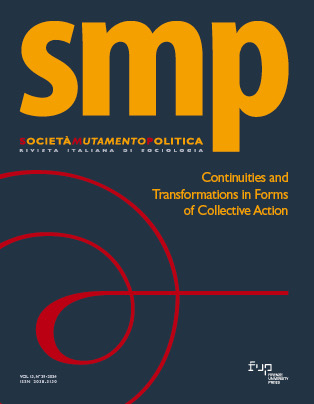Critical Notes
Vittorio Cotesta, The Heavens and the Earth: Graeco-Roman, Ancient Chinese, and Mediaeval Islamic Images of the World
Published 2024-07-23
How to Cite
Campo, E. (2024). Vittorio Cotesta, The Heavens and the Earth: Graeco-Roman, Ancient Chinese, and Mediaeval Islamic Images of the World. SocietàMutamentoPolitica, 15(29), 249–253. https://doi.org/10.36253/smp-15512
Copyright (c) 2024 Enrico Campo

This work is licensed under a Creative Commons Attribution 4.0 International License.
References
- Alexander J. C. (2013), La promessa e le contraddizioni dell’assialità, in «Fenomenologia e società», XXXIV(2): 70–76.
- Assmann J. (2012), Cultural Memory and the Myth of the Axial Age, in R. N. Bellah e H. Joas (eds.), The Axial Age and Its Consequences, Harvard University Press, Cambridge, Mass, pp. 366–407.
- Bellah R. N. (2012), The Heritage of the Axial Age. Resource or Burden?, in R. N. Bellah e H. Joas (eds.), The Axial Age and Its Consequences, Harvard University Press, Cambridge, Mass, pp. 447–467.
- Bellah R. N. e Joas H. (eds.) (2012), The Axial Age and Its Consequences, Harvard University Press, Cambridge, Mass.
- Cotesta V. (2021), The Heavens and the Earth: Graeco-Roman, Ancient Chinese, and Mediaeval Islamic Images of the World, Brill, Boston.
- Eisenstadt S. E. (eds.) (1986), The Origins and Diversity of Axial Age Civilizations, State University of New York Press, Albany, NY.
- Jaspers K. (2014), Origine e senso della storia, (a cura di) R. Regni, Mimesis, Milano.
- Smith A. (2015), Between facts and myth: Karl Jaspers and the actuality of the axial age, in «International Journal of Philosophy and Theology» 76(4): 315–334. https://doi.org/10.1080/21692327.2015.1136794

